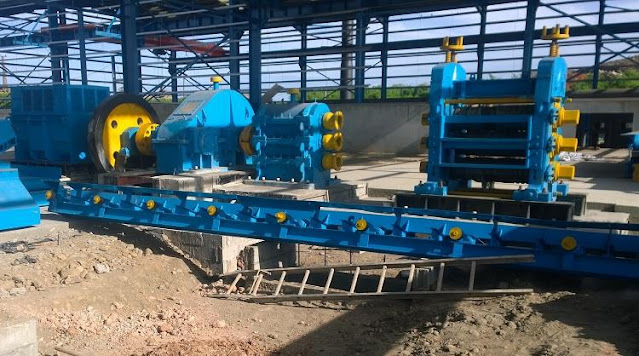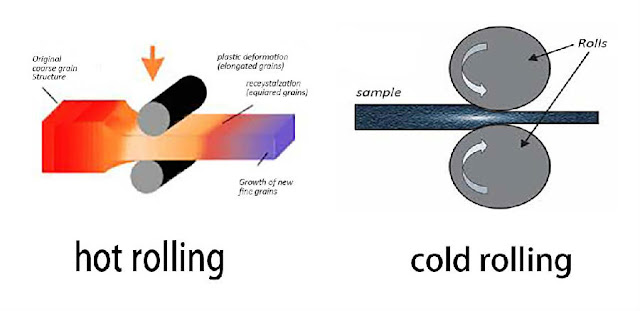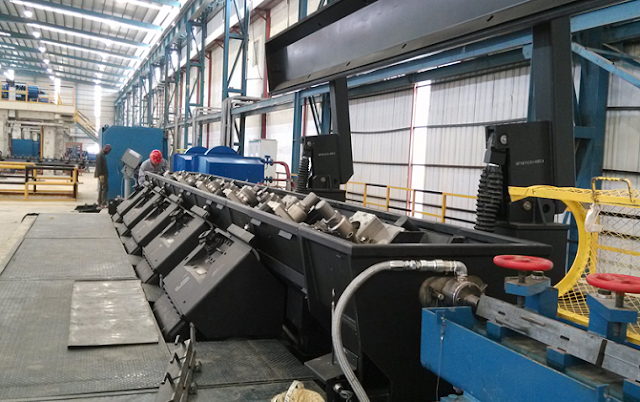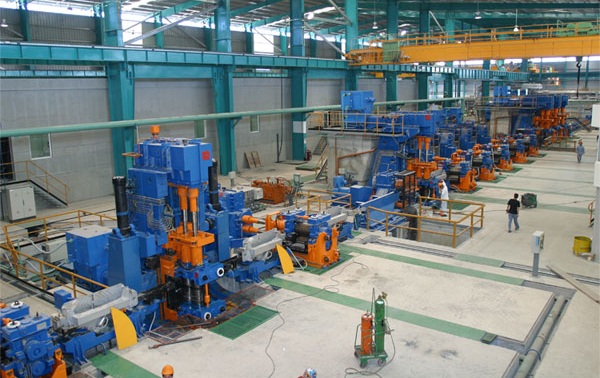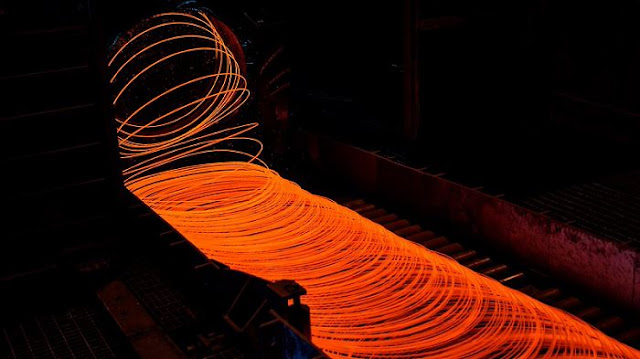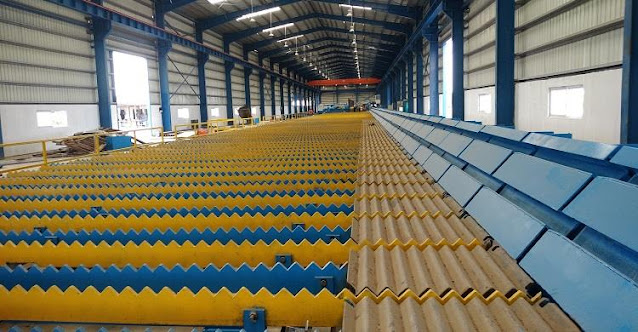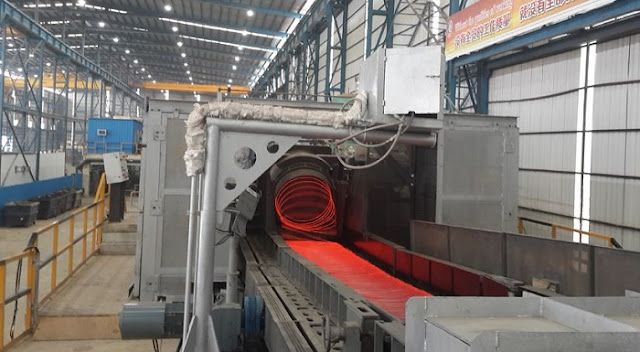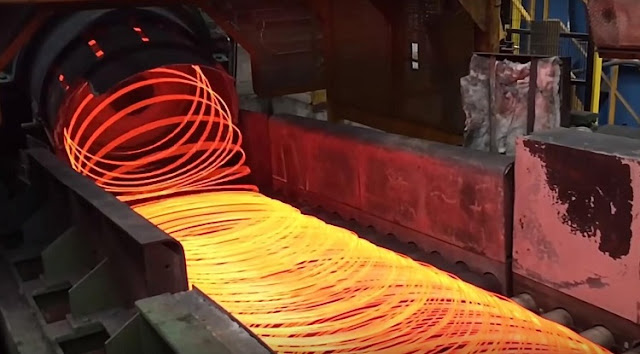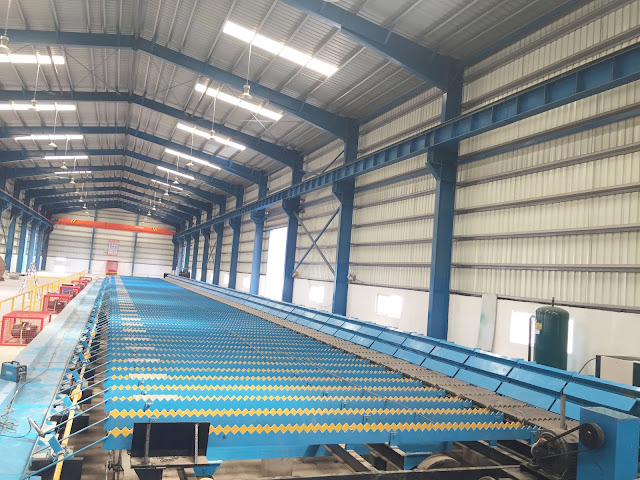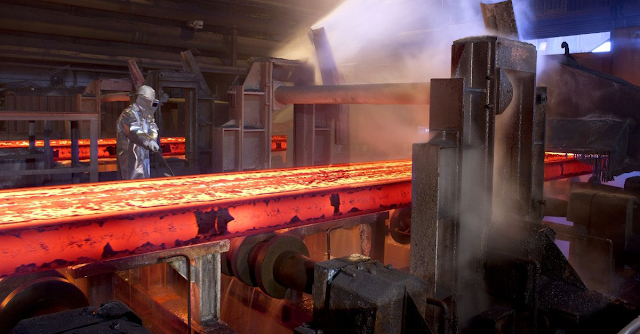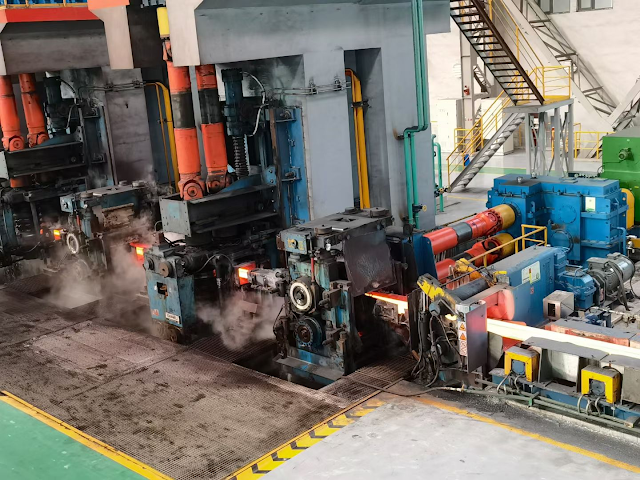What is Walking Beam Cooling Bed?
Walking Beam Cooling Bed Introduction:
(1) The Usage of Walking Beam Cooling Bed: Arranged behind the rolling mill for cooling of finished steel and bar products. Cooling finished product specifications Φ10 ~ 40mm rebar, Φ10 ~ 50mm round steel. The steel grade is plain carbon steel, excellent carbon steel, and low alloy steel. The speed of the large finished product is 16m/s and the annual production capacity is 600,000 tons.
(2) The rolling mill cooling bed type is the walking beam type of the rack. The effective size of the bed is 96000×9500mm. The large length of the steel is 90m, the pitch of the tooth is 100mm, the thickness of the rack is 18mm, the spacing of the static rack is 300/600mm, and the distance between the racks is 300/. 600mm.
(3) Walking beam cooling bed input roller: roller diameter Φ188mm, roller length 190mm, roller distance 1200mm, inclination angle 12°, drive type single machine drive, variable frequency speed regulation, irreversible, roller line speed 4.5~20m/s(max), motor YVPG100L2-4 , 2.2KW, 1500rpm, each motor with axial flow fan 125FZY2-S, 25W, 220V, 50HZ, the number of 115; 6 free rolls.
(4) Walking beam cooling bed dial-in mechanism: the width of the dial-in block is 150mm, the length of the dial-in block is 138m, the angle between the dial-in block and the horizontal is 35°, the angle between the dial-in block and the vertical is 12°, and the speed of the dial-in block is 0.15~0.3m/s. The dial-in block is lifted and hydraulic cylinder Φ63/Φ45x90. Pneumatic gear cylinder QGAIIΦ80×20-MP4, 1; compressed air working pressure 0.4~0.6Mpa, cycle 4s~12s.
(5) Walking beam cooling bed surface drive: main motor Z4-280-21, 132kW, speed 750/1600rpm, 2 sets; photoelectric encoder LAKESHORE, 2; reducer A=508mm, I=41, 4 sets; eccentric wheel eccentricity 50mm. The rack moves once the steel stroke by 100mm.
(6) Alignment roller path: roller diameter Φ225/165mm, roller length 810mm, effective number of teeth 6, roller surface speed V=1.1m/s, roller spacing 1200mm; reducer BWD1.5-18-11, I=11 , motor Y90L-4, 1.5KW, 1400rpm, the number is 45; the number of free rollers is 18.
(7) Chain type steel transfer machine: Transfer steel specifications ф12 ~ ф50mm. The length of the steel is 90m, the width of the chain transfer machine is 1500mm, the chain spacing is 1200mm, the chain speed is 0.2m/s, the stepping distance is 20~70mm, the transmission motor is YTSP160M-4, 11KW, 1500rpm, AC380V, 2 sets. The center distance of the reducer is 349mm, the transmission ratio is I=1:75, and the number is 2.
(8) Transport trolley: the width of the trolley is 1000mm, the lifting time of the trolley is 1~2s, the round-trip speed of the trolley is ~0.5m/s, the transmission motor: YTSP132S-4, 5.5KW, 1500rpm, AC380V, 2 sets, reducer: A=349mm, I = 1:45, 2 sets. The trolley is lifted and used with a hydraulic cylinder.
(9) Output roller path: roll diameter: Φ188 mm, roll length: 1000 mm, roll distance: 1200 mm, roll line speed: 2 m/s, number of rolls 86, 6 free rolls. Roller motor: YGb112L2-4, 1.5KW, 1450rpm, AC380V, 80 units, reversible.
Since 1989 Hani Tech has been always involved in design, engineering, manufacturing and installation of complete hot rolling mill plant for long products (re-bars, SBQ bars, wire rod, small and medium sections), as well as revamping and upgrading of existing plants.
Hani Tech is the one-stop manufacturer & supplier able to design, manufacture, install and commission your hot rolling mill plant from A to Z.
Please contact stella@hanrm.com for a quotation.
And free send inquiry to us.
Email: stella@hanrm.com stellarollingmill@gmail.com
Whatsapp/Wechat:+8615877652925
.jpg)





